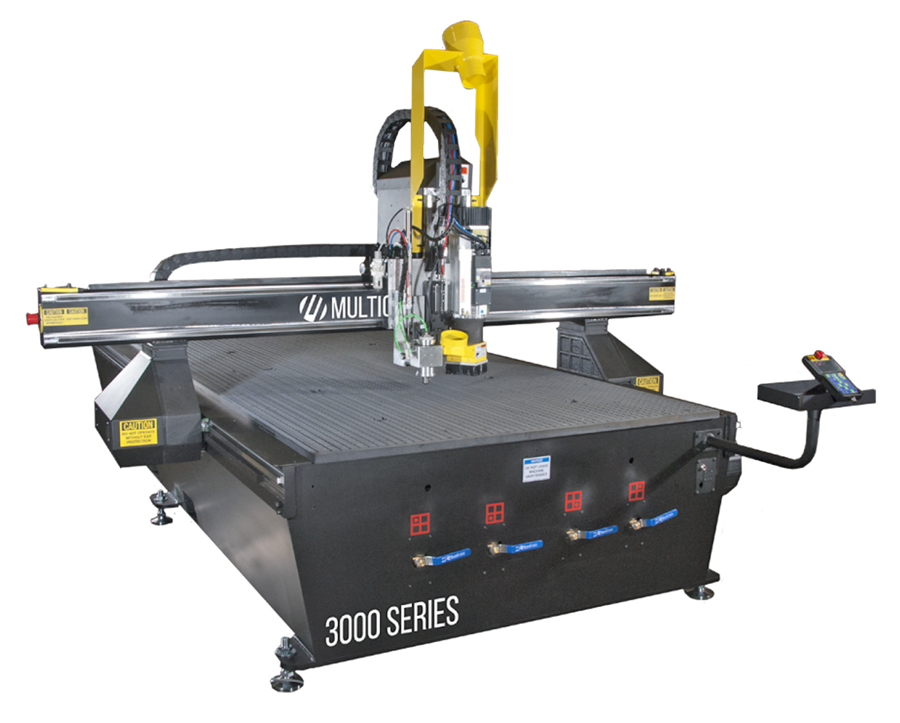In these times, it’s a safe bet to say your shop is engaged in digital printing because a wide selection of printers and print technologies exist, and printers are available in just about everyone’s price range. Truth is, digital printing is a beneficial but conventional shop asset. Are there other market areas where you can offer something that is profitable, different and not rocket science? Yes. A CNC router can put your shop in a niche market that may exceed your ordinary competition. For example, a XY-Z CNC router can produce channel letter faces, architectural panels, engravings, dimensional signs and a lot more. Your material choices are wood, foam, soft metals and others.
CNC is an acronym for computer numerical control, a coded machine guidance system that originated in World War II aircraft manufacturing to speed the machine cutting of components. Today, CNC machines are digitized and feature automated tracking systems that position and drive various cutting tools along two or three axes (XY, XY-Z) of your choice. If buying, be sure to choose the latter. The Z axis allows you to cut bevels.
Sound great? Are you thinking, “Where do I buy?” Before you sign any contracts, consider your requirements. A good place to begin is table size, because, like printers, the larger the table, the more expensive the machine. A common CNC router size for signmakers is 4 x 8 ft., meaning the machine table will cut (and the gantry clear) the edges of a standard, 4 x 8-ft. panel. Smaller table sizes are available, of course, and some manufacturers offer larger or extended models.
Do you have enough room in your shop? Obviously, the machine, operator and media-handling space requirement will be much larger than the machine footprint. A rule of thumb is to have more space than you think you’ll possibly need because, in addition to media load/unload space, you’ll need, separately, a dust-collection system and ventilation system; add a tool cabinet and bench as well.
Your other decisions are the type of media hold-down: vacuum or clamps. The less expensive option uses T-slot clamps while the more expensive option is a vacuum system; a zoned vacuum system is ideal.
Next, think about your market. What you’ll be cutting and/or engraving for your clients determines your tool spindle and cutting-tool selection. “Spindle,” in most machine tool conversations, refers to the entire rotary unit, including the shaft itself, bearings and tool-holding chuck (or collet) that is mounted on a lateral, cross-gantry drive system. Such motor-drive spindle systems vary in size, horsepower, RPM and speed.
Advertisement
Most signmaking materials require high powered spindles that reduce the number of passes needed to cut through thick media. Also, try to buy a machine that features an auto tool changer. Otherwise, your operator must pause complex jobs to change the cutting bit before the cutter begins a new process. We also suggest you consider an optional cutting knife and vision registration system, which allow the cutter to become a finishing machine for digital prints.
In addition, know that most machines ship with the necessary software, but be prepared to purchase a third-party package, especially if you intend to do relief engraving. Finally, don’t skimp on router bits. Cheap bits dull quickly and a snapped bit could gouge your sign material.



 Tip Sheet2 weeks ago
Tip Sheet2 weeks ago
 Photo Gallery3 days ago
Photo Gallery3 days ago
 Ask Signs of the Times5 days ago
Ask Signs of the Times5 days ago
 Real Deal2 weeks ago
Real Deal2 weeks ago
 Paula Fargo24 hours ago
Paula Fargo24 hours ago
 Benchmarks1 week ago
Benchmarks1 week ago
 Photo Gallery1 day ago
Photo Gallery1 day ago
 Women in Signs2 weeks ago
Women in Signs2 weeks ago









